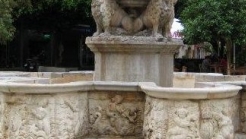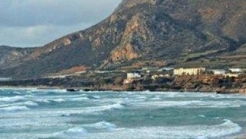

Greece
The house he lived in, where he wrote and died, after being destroyed by the WWII bombardments, was later restructured and still exists to this day. In Solomos’s house, the Company of Corfu Studies founded the Centre for Solomos Studies, which operates as “Solomos Museum”.
It is known that Greece’s national poet Dionysios Solomos lived most of his life, and until his death (1798-1857) in Corfu, where he wrote the biggest part, as well as the most significant one, of hiw writings, including «The Free Besieged » .
The house he lived in, where he wrote and died, after being destroyed by the WWII bombardments, was later restructured and still exists to this day. In Solomos’s house, the Company of Corfu Studies founded the Centre for Solomos Studies, which operates as “Solomos Museum”.
The poet’s desk and a small autograph of his are kept in the house. There is also exhibited photographic material, referring to the places, the people and the facts that are connected to the life, the works and the era of Solomos.
There is also a rich Solomos library, which is continuously enriched, and which contains all the old publicatios of the «Hymn to Freedom», as well as a series of portraits of the poet, and the members of the so-called Solomos School.


Heraklion is not just a city in the next visitor’s destination. Expresses something more, something deeper, a history of thousands of years. With this thought must learn the traveler to "read" the area beyond the mundane habits that require a visit to museums or at Knossos.


One of the most famous beaches of the Mediterranean, it is located on the west side of the Gramvousa peninsula, next othe the ruins of ancient Falasarna. Something between Carribean and Maldives.

__list_246_139_c1.jpg)
The Venetian Walls of Heraklion is the largest you meet strongest fortress building across the Mediterranean, which did not have the luck to be in the Heritage List of UNESCO. To built this massive fort took dozens of years.
1039 Ε 6061 01515 00